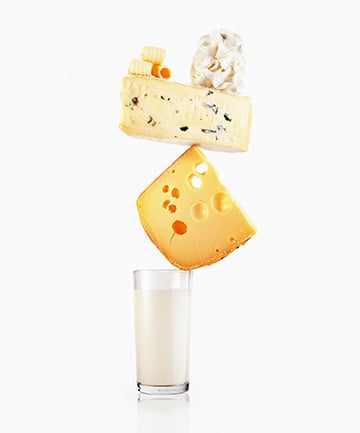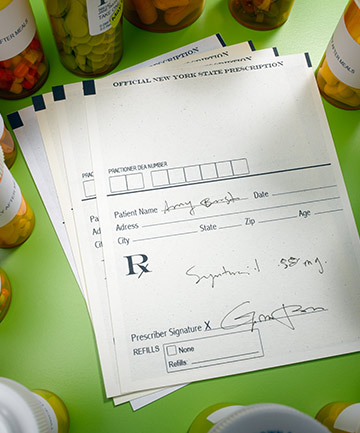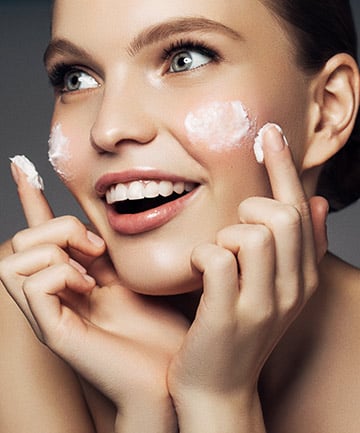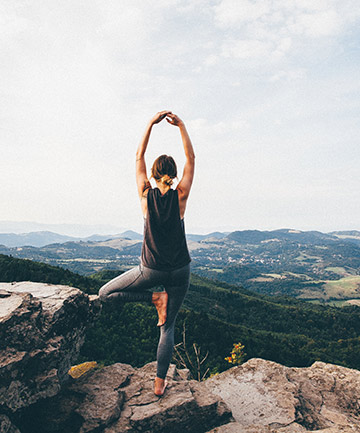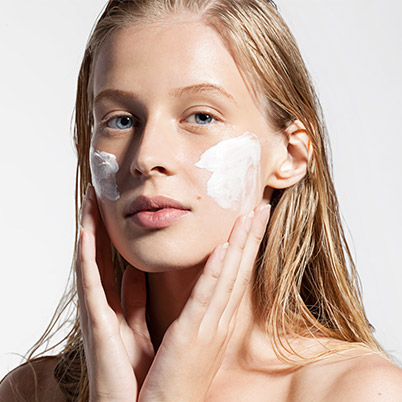"When you develop cystic breakouts, specifically on the chin, jawline and neck, it might be a sign that you're getting more dairy in your diet than your body can tolerate," points out Rouleau. "Your skin acts as an excretory system to get rid of things that your body doesn't agree with, so when you eat too much dairy, it can come out in the form of cystic blemishes in the lower area of the face." Why does your skin not understand the deliciousness that is a triple creme brie? "It's thought that sugars in milk, as well as perhaps growth factors from lactating cows, stimulate our skin's oil glands," notes Zeichner.
To determine if your pimples are a result of too much cheese, Rouleau suggests completely eliminating dairy from your diet for two weeks. "If you don't develop any new cysts when you normally would have, then this may be the solution," she says. Happily, this doesn't mean you can't eat dairy at all. Slowly introduce it back into your diet; once you start breaking out again, you'll know you've hit your body's tolerance level, she says.
Image via Getty
To determine if your pimples are a result of too much cheese, Rouleau suggests completely eliminating dairy from your diet for two weeks. "If you don't develop any new cysts when you normally would have, then this may be the solution," she says. Happily, this doesn't mean you can't eat dairy at all. Slowly introduce it back into your diet; once you start breaking out again, you'll know you've hit your body's tolerance level, she says.
Image via Getty
Unfortunately, because cystic acne is a different beast than your standard, run-of-the-mill zit, it often requires a little more help from the pros. And that's not only in order to treat the immediate blemish but also avoid future scarring. When the spots from cystic acne heal, they often leave marks, some of which can be permanent. It's important to get the skin cleared up as quickly as possible to prevent scars from developing, advises Zeichner. The bottom line: If OTC products aren't doing the trick within two to four weeks, see your derm for an evaluation and personalized prescription treatment, he says.
Image via Getty
Image via Getty
Once you do have a treatment plan in place, it's important to address the whole face, not just the areas where you're prone to breakouts. Why do you need to treat the parts of your face that are (thankfully) blemish-free? "Your face is made of thousands of 'pipes' connecting oil glands to the surface of the skin. In acne, we know that each of these is somewhat clogged, but we have no way of predicting which will become fully blocked and lead to a pimple," explains Zeichner. Instead of playing catch-up and trying to eliminate pimples once they've developed, try to prevent cystic acne before it begins by using your acne treatment on your full face. As they say, the best offense is a good defense.
Image via Getty
Image via Getty
As in take a yoga class, download a meditation app, get a mani. Do whatever it takes to lower your stress levels. "There's a well-established link between emotional stress and acne breakouts, including cysts," says Zeichner. "Stress revs up hormones that stimulate your oil glands." Since (obviously) avoiding stress entirely is not an option, do whatever you can to minimize its effects on your body, especially during times that you know are particularly stress-inducing. It may not be enough to clear your skin completely, but it's certainly not going to hurt.
Image via Getty
Image via Getty


